Sightseeing
Hillivew is situated in the heart of the West Of Ireland with some of the most breathtaking sites in the world.
Explore The Wild Atlantic Way
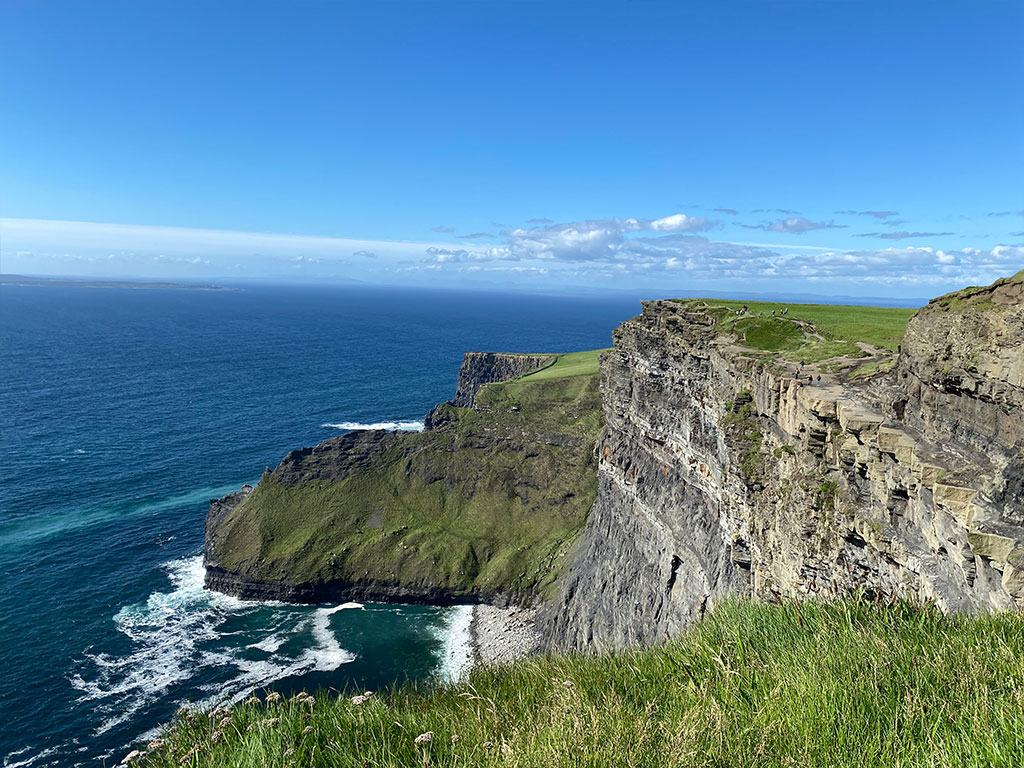
Cliffs Of Moher
These majestic cliffs rise from the Atlantic Ocean to a height of nearly 200m and extend for a distance of 8km from Hag’s Head due west of Liscannor to a point beyond O’Brien’s Tower. They take their name from a ruined promontory fort, Mothar, which was demolished during the Napoleonic wars to make room for a signal tower.The Cliffs of Moher are home to one of the major colonies of cliff nesting seabirds in Ireland. The area was designated as a Refuge for Fauna in 1988 and as a Special Protection Area for Birds (SPA) under the EU Birds Directive in 1989. Included within the designated site are the cliffs, the cliff-top maritime grassland and heath, and a 200 metre zone of open water, directly in front of the cliffs to protect part of the birds’ feeding area. The designation covers 200 hectares and highlights the area’s importance for wildlife. See www.cliffsofmoher for more information.
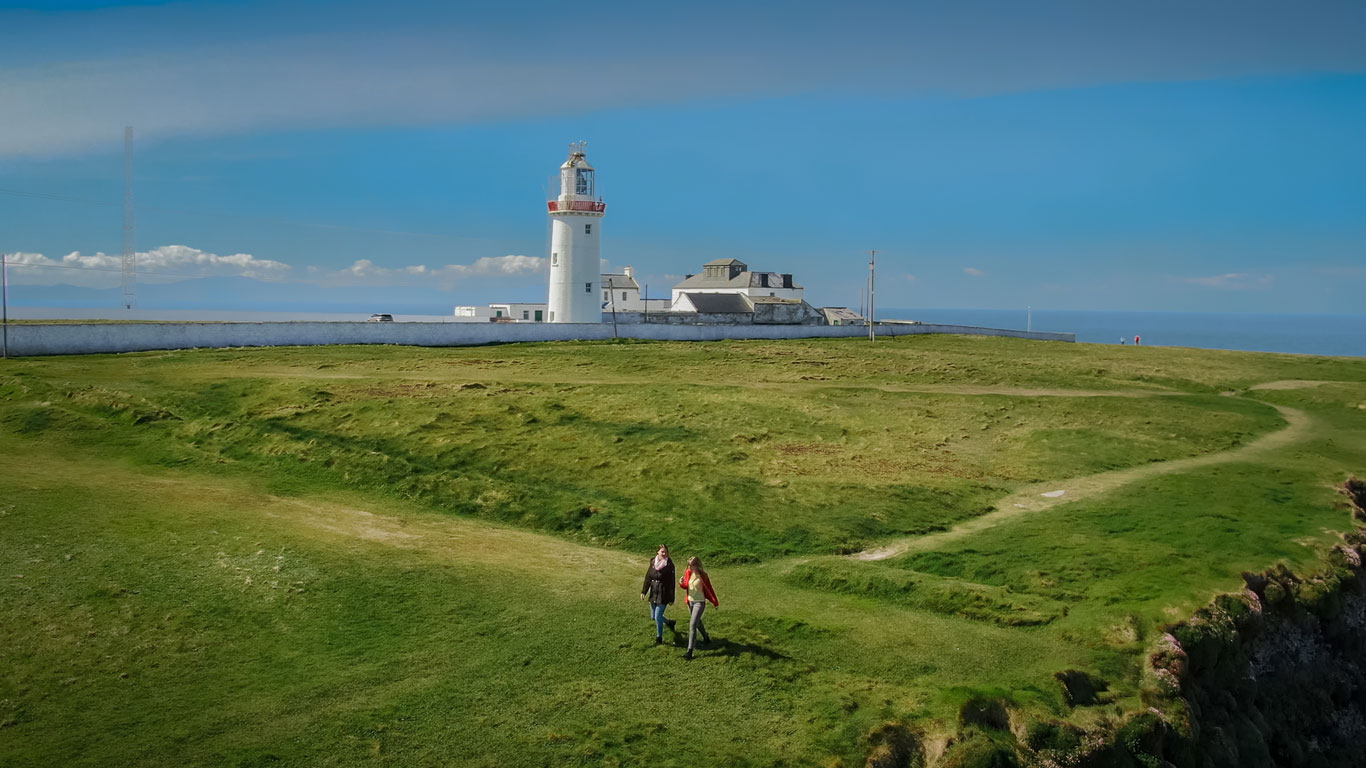
Loop Head
You can view more at Loop Head Website
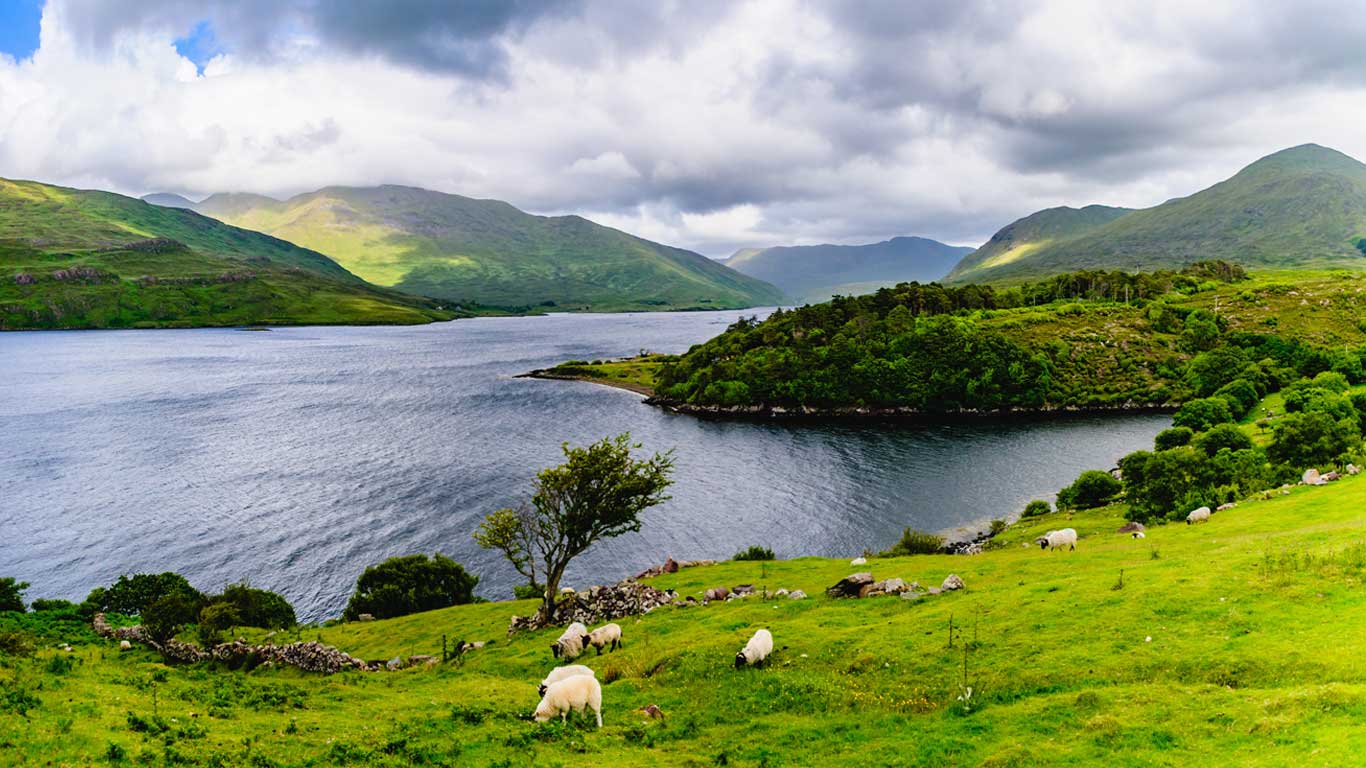
Lough Derg Drive
Take the meandering Lough Derg Drive & see the picturesque villages through three different counties. Starting from Killaloe , Co Clare & Ballina , Co Tipperary , you will travel up the western side of Lough Derg through Ogonnolloe where you will come to the first of several lookouts points . Here you can see Inis Cealtra ( Holy Island) which is one of the most famous monastic sites in Ireland. Continuing on to Tusmgraney where the East Clare Heritage Centre is located in St Cronans Church, which is probably the oldest church still in use in Ireland, continue on through Scarriff to Mountshannon where at the Mountshannon Harbour you can take a boat to Inis Cealtra ( Holy Island) , continue on through Whitegate to Portumna in Co Galway at the top of Lough Derg & stop off at Portumna Castle. Crossing the bridge into Co Tipperary North & you will follow through the quaint villages of Terryglass , Ballinderry , & Coolbaun . The narrow winding roads are well worth the drive when you see the old thatched roof houses coming through Puchan . take a quick side trip into Dromineer & then before entering Nenagh at the roundabout folllow in the direction of Portroe .

Ailwee Caves
The Aillwee cave is located 4.5km south of Ballyvaughan village and is one of the oldest discoveries in Ireland and one of Irelands leading attractions. With a journey through beautiful caverns and under fascinating formations, this is a place worth visiting. Ailwee cave is a tunnel burrowing 1 kilometre into the hill. It consists of 3 chambers – Bear Haven, Mud Hall and Cascade Chamber. At Aillwee, they also make the Award Winning Burren Gold Farmhouse Cheese. Visit the farm shop where you can enjoy a taster and see the cheese making process for yourself. Ailwee Mountain walk is an effort in itself but well worth it to discover the beauty of the mountain, ideal for bird watching. For your convenience, Aillwee offers guided tours through the caves, which take approximately 30 minutes. There is also a craft shop, restaurant and a coffee shop on the premises. See www.aillweecave.ie.
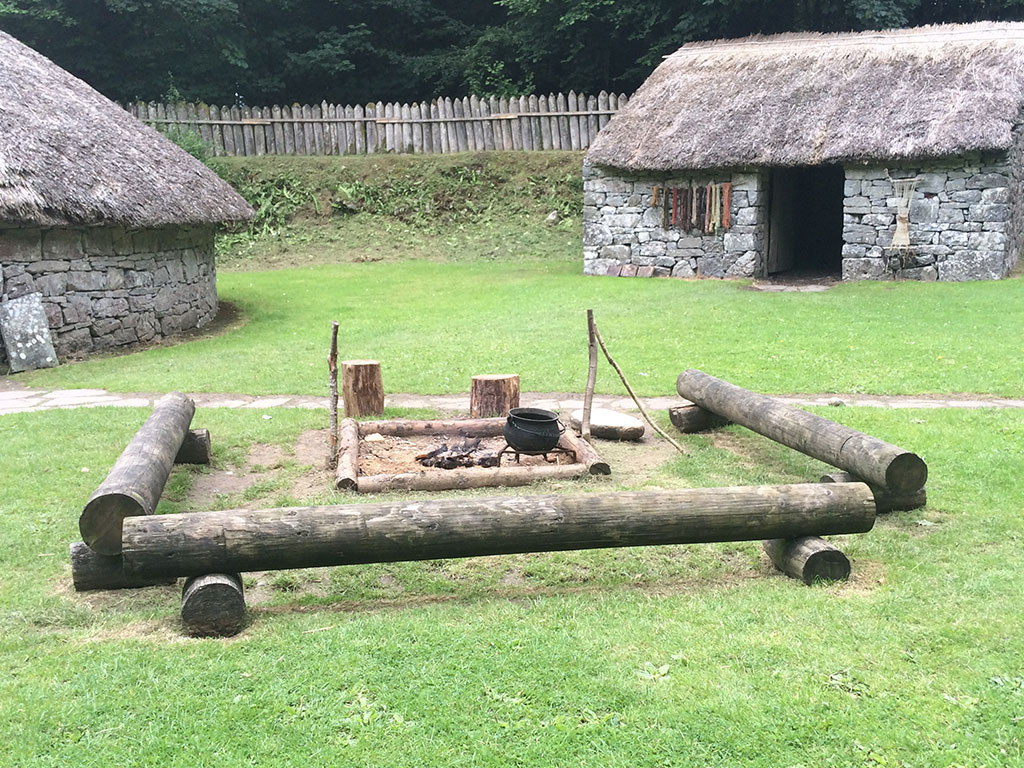
CRAGGAUNOWEN
A re-creation of Celtic Ireland is how you could describe Cragaunnowen – the Living Past Experience. This award winning Prehistoric Park is situated on 50 acres of wooded grounds and interprets Irelands pre-historic and early Christian past. Crannogs were artificial islands on which people built houses, kept animals and lived in relative security. Step inside the thatched housed on the crannog, built of wattles and mud, and you are transported back to an ancient time. The second dwelling is a Ring Fort, which served more as a farmstead rather than a fortification. The Ring Fort features a man made cave or underground passage, which was used for storage and as a refuge in times of danger. Overlooking all is Craggaunowen Castle, built by John MacSioda MacNamara around 1550. The visitor centre houses exhibitions of artefacts and display panels as well as an AV show, which interpret the area. Many of the tools and implements used by the pre-Celtic settlers of Ireland who farmed and lived in this peaceful valley are on display in the centre. A tea and gift shop rounds off the experience.

BUNRATTY CASTLE & FOLK PARK
At Ireland’s premier visitor attraction you are invited to explore two wonderful experiences – the acclaimed 15th century Bunratty Castle and 19th century Bunratty Folk Park. The Castle is the most complete and authentic medieval fortress in Ireland. Built in 1425 it was restored in 1954 to its former medieval splendour and now contains mainly 15th and 16th century furnishings, tapestries, and works of art which capture the mood of those times. Today, the castle stands peacefully in delightful grounds. The houses and cottages of the folk park spread out at the foot of its massive walls, much in the way that the cottages and crofts of old would have clustered around its base. We invite you to wander through the castle and marvel at the finest collection of medieval furniture in the country which brings to life a vital part of our Medieval past. Bunratty Castle closes each day at 4pm to prepare for the Medieval Banquet. Within the grounds of Bunratty Castle is Bunratty Folk Park where 19th century life is vividly recreated. Set on 26 acres, the impressive park features over 30 buildings in a ‘living’ village and rural setting. Meet and chat with the Bean an Tí (Woman of the House) and various street characters including the Policeman and Schoolteacher who give the site its sparkle during the summer months. Enjoy the tastes, scents, sights and sounds of this enchanting place as you stroll from house to house or around the charming village complete with school, post office, doctors house, hardware shop, printers and of course the pub! It’s a wonderful experience for adults and children alike with something for everyone to enjoy!

KNAPPOGUE CASTLE & WALLED GARDEN
Two miles over the road from Quin lies a huge fifteenth century tower house – Knappogue castle. Originally built in 1467 by the McNamara clan who had a huge presence in the area at that time, the castle was taken over in 1649 by Oliver Cromwell who made it his headquarters until 1660 when, after the Restoration, the McNamara regained control of the castle. In recent years it has been beautifully restored and is open for viewing between April and October. There are Medieval banquets held in the main part of the castle between May and October allowing the visitor to step back in time and enjoy the splendour and fun associated with a Medieval meal.

HUNT MUSEUM
The award winning Hunt Museum at Limericks Custom House contains an internationally important collection of some 2,000 original works of art and antiquity. It is a personal collection formed by John and Gertrude Hunt who selected each piece according to the quality of its design, craftsmanship and artistic merit. These criteria were applied to objects from all periods of the past – from the Stone Age to the Twentieth Century. While the hunt Collection is particularly well known for its religious works of art there is also a wealth of other material including material from the Celtic Past and the ancient civilizations of Egypt, Greece and Rome. Among many important works of art in the collection are the personal seal of Charles 1 of England, the Mary Queen of Scots Cross, a coin revered since the Middle Ages as being one of the “30 pieces of silver” and a bronze horse by Leonardo da Vinci. There are also paintings by Renoir, Picasso, O’Connor and Yeats. Superb restaurant facilities. Meeting facilities. Guided tours available. Affiliations: Heritage Island. Open daily – year round. For more information, visit www.huntmuseum.com.
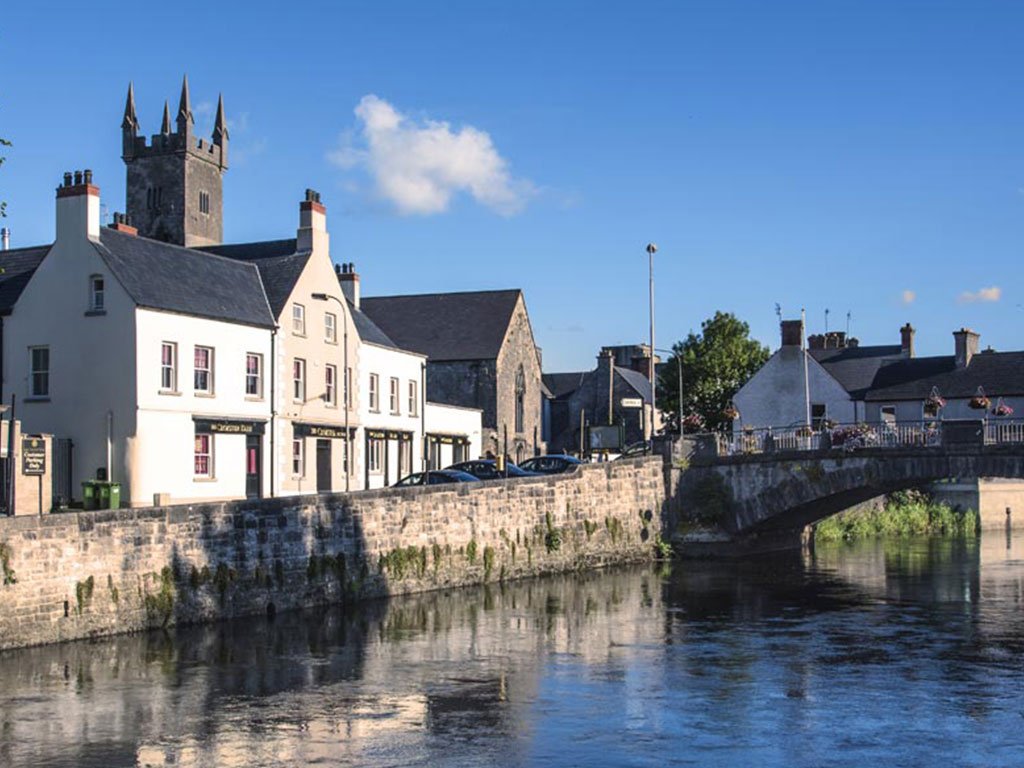
Ennis Town
Ennis is a truly outstanding town. Undiscovered by many visitors from abroad and other parts of Ireland. You can unwrap the secrets of Ennis by taking a short break with us, at any time of the year. Ennis, and its environs, boast a wide range of truly original visitor attractions. Lining its narrow, meandering streets is a bewildering variety of fantastic shopping opportunities: unique retail outlets with traditional customer service values. The town is fast gaining a reputation as being ‘the boutique capital of Ireland’. The customer service ethos extends to its superb range of hotels, guest houses and restaurants: extending from friendly family-oriented establishments, to something a little more special. See www.visitennis.ie.
